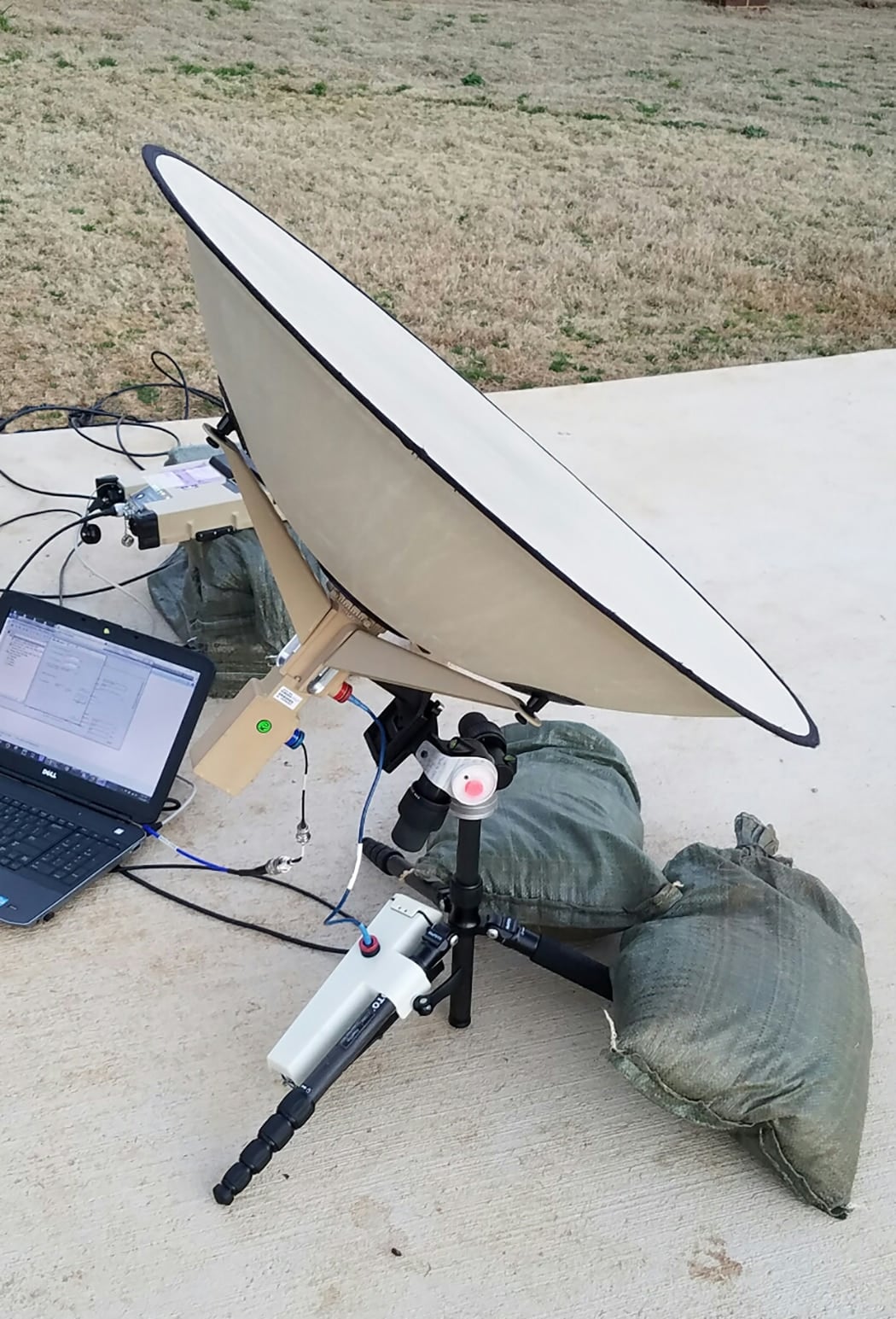A subsidiary of Cubic Corp. has released a new mini-high-throughput terminal dish for expeditionary communications called the FLEX.
One of the main differences between GATR's FLEX and other portable SATCOM systems, such as GATR’s inflatable antenna balls, is its portability.
The FLEX is a 0.75-meter foldable satellite antenna terminal that weighs less than 20 pounds and can be assembled in 90 seconds. The FLEX can be folded into the shape of a pizza slice for transportation in a carry-on-sized suitcase.
Cubic took similar technology from the inflatable ball antenna but developed a different variation of the material so that it doesn’t inflate; rather it just pops into the parabolic shape, according to Victor Vega, of Cubic's technical sales team, who spoke to C4ISRNET during a recent visit to the corporate headquarters in San Diego.
Vega said part of the genesis of the product is that in working with Special Operations Command, the unified command asked what can Cubic do in regard to extremely portable, sub-1-meter dishes to revolutionize SATCOM.
Such a small system in totality allows for greater portability and flexibility for forces at the very tip of the spear to receive SATCOM.
The entire unit includes a feed, receiver and amplifier that all pack up into the same suitcase. While Cubic-GATR is focusing mainly on Ku and Ka band frequencies, given that FLEX was designed for high-throughput satellites, it is also modular and can be outfitted with any frequency.
Additionally, the system comes with a motor to point the dish in different directions and with a precise controller to help improve the signal. The fine control comes in handy, especially with high-frequency Ka band requiring more precise pointing.

GATR's Flex has a foldable, parabolic reflector.
Photo Credit: Courtesy of Cubic Corporation's GATR
Within the special operations community, troops could mount something like this on an off-road vehicle, and upon getting to the halt, pop up the dish, get some high throughput on the halt and pack it up as they move (as opposed to dealing with larger, less portable systems), Vega offered.
The small size and portability could also allow for greater secrecy in intelligence operations, he said. Carrying the device inside a suitcase, intelligence officers could pop out the dish in hotel rooms or other confined spaces abroad, then connect to secured networks as opposed to insecure public wireless networks.
The system has been well-received by government partners that have tested it — mainly SOCOM — but there are currently no official government customers at this time.
Mark Pomerleau is a reporter for C4ISRNET, covering information warfare and cyberspace.






